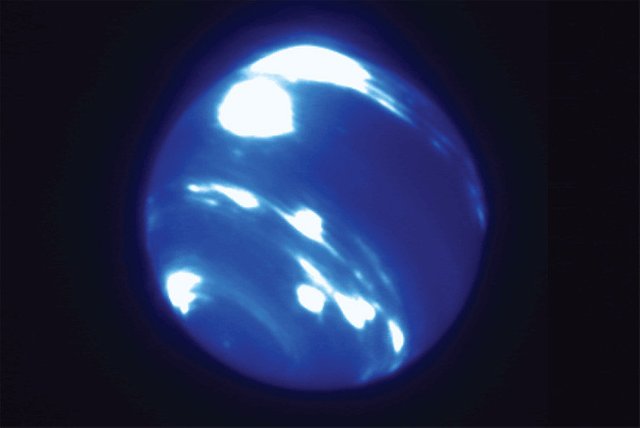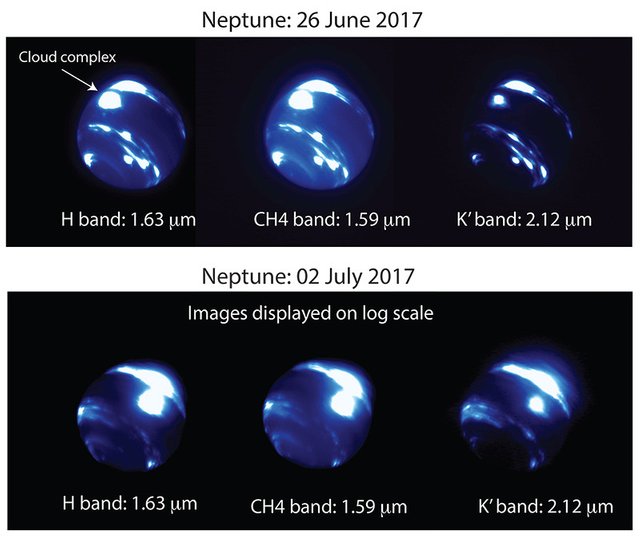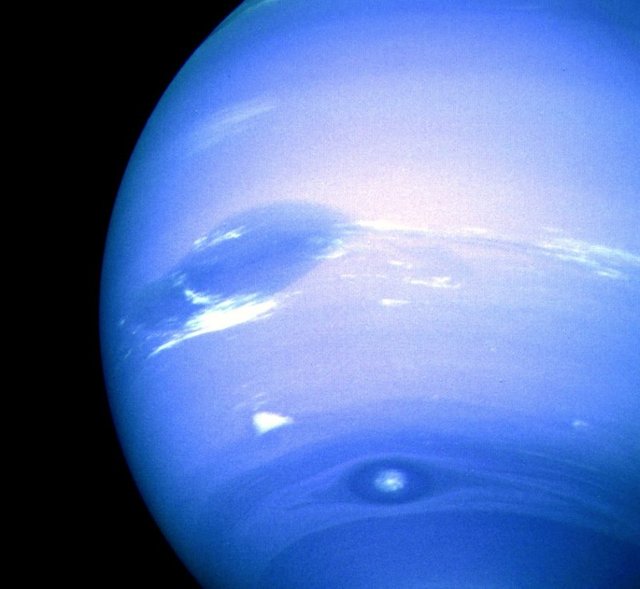Earth-sized storm on Neptune
Bright system of clouds first seen on Neptune in June is a storm system nearly the size of Earth. It was discovered by Ned Molter, a UC Berkeley astronomy graduate student. His idea was to prove that some bright objects can be studied just as well during twilight as in night hours. To test the hypothesis he performed test run of twilight observing at W. M. Keck Observatory on Maunakea, Hawaii. In the first test he discovered a new feature on Neptune: a storm system nearly the size of Earth.

Image: N. Molter/I. De Pater, UC Berkeley/C. Alvarez, W. M. Keck Observatory)
The center of the storm complex is ~9,000 km across, about 3/4 the size of Earth, or 1/3 of Neptune’s radius.
After discovery, Molter continued his observations seeing as the storm brightened considerably between June 26 and July 2. The maximal size achieved was 9000 km which is 3/4 of Earth or 1/3 of Neptune diameter.

Image: N. Molter/I. De Pater, UC Berkeley/C. Alvarez, W. M. Keck Observatory
Imke de Pater, a UC Berkeley professor of astronomy and Molter’s adviser commented the discovery:
Historically, very bright clouds have occasionally been seen on Neptune, but usually at latitudes closer to the poles, around 15 to 60 degrees north or south. Never before has a cloud been seen at or so close to the equator, nor has one ever been this bright.
Seeing a storm this bright near equator is extremely surprising - Normally, this area is quiet and bright clouds are located in the mid-latitude bands.
It is still unknown how equatorial storm system could be formed. The most probable reason may be a huge, high-pressure, dark vortex system anchored deep in Neptune's atmosphere. As gases rise up in a vortex, they cool down. When methane temperature drops below the condensation point, the gas condenses out and forms clouds. Neptune orbits the Sun in 160 years, so each season lasts there 40 Earth's years. So the dark vortex may be part of seasonal changes on Neptune and next time it will create after decade.

Image: Voyager-2, 1989 - Great Dark Spot on Neptune
Neptune is the windiest planet in our solar system, with the fastest observed wind speeds at the equator reaching up to a violent 1 600 km/h. To put this into perspective, Earth's Category 5 hurricane has wind speeds of 255 km/h.
The largest Neptune's storm detected was the Gread Dark Spot, imaged by Voyager-2 in 1989. Its size was 13 000 x 6 500 kilometers. Later in 1994 Hubble tried to find it again but it disappeared.
Source: http://news.berkeley.edu/story_jump/twilight-observations-reveal-huge-storm-on-neptune/
Now that is a s#!t storm!